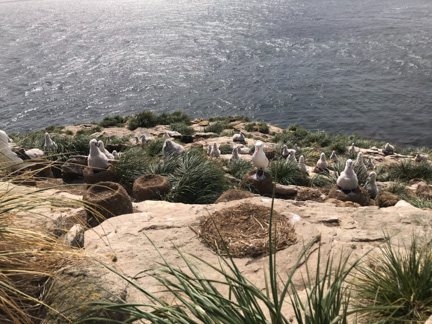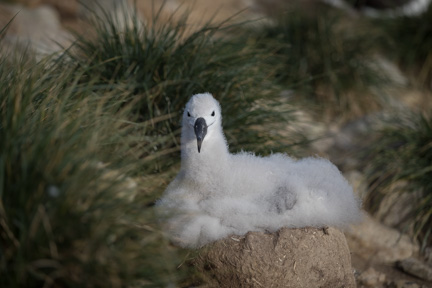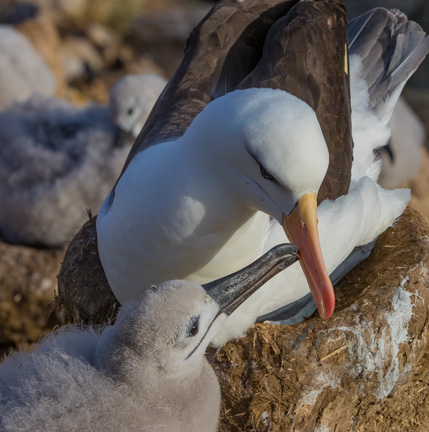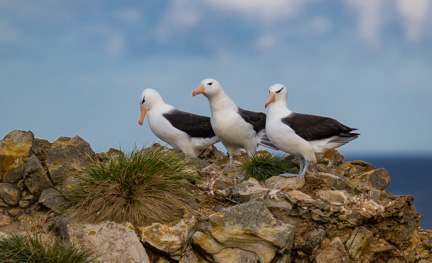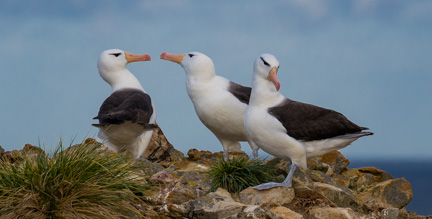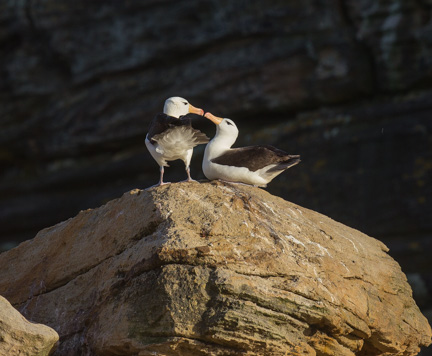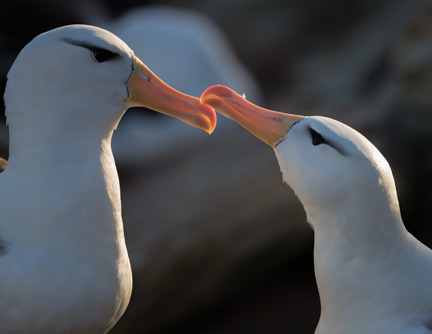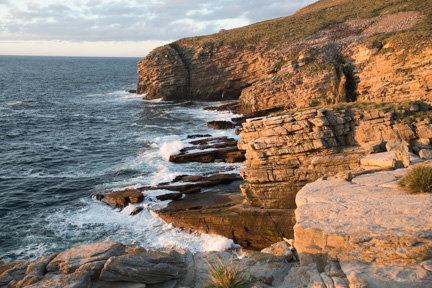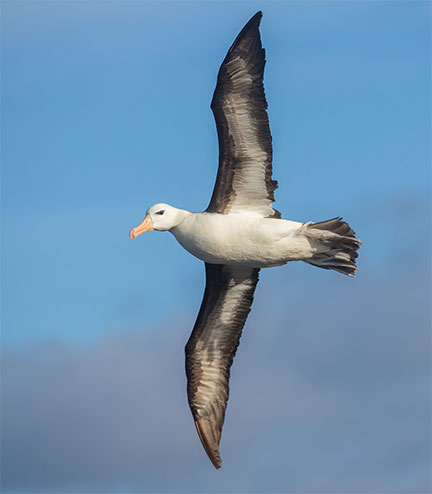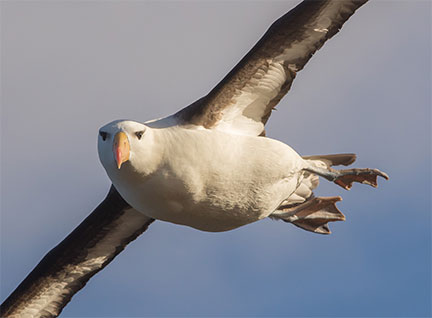After a 30 minute walk from Georgina’s digs we were surrounded by Black-browed albatross adults and chicks. They did not seem to be bothered by our presence, and went about their business right in front of us.
At the start of our walk we passed some of the original buildings in the New Island settlement
We felt like we were hiking in the English countryside
The Black-browed albatross and the Rockhopper penguins had their rookeries at the same location at the cliffs. It is amazing to think that these penguins climb to this height every day to feed their chicks.
The albatross chicks sit in these cylindrical nests for 4 months as they are fed by the adults
If you move slowly and quietly they sit there calmly and just stare at you
If you get too close they will clack their beaks at you as a warning to back off
They were 3 months old when we saw them, and were starting to gain their strength by flopping their wings. In another month they will take to the skies.
These chicks have ravenous appetites, just like many large chicks that are growing rapidly. They would peck at the adult’s beak to get the adult to regurgitate the krill and small fish they have been eating from the vast ocean around this area. These photos show dinner time (and lunch time, and breakfast) at the rookery.
Dr. P brought along some Joe’s O’s from Trader Joe’s, and had breakfast with the chicks one morning. The chicks are never fed this or any other food because it is against the regulations, and could cause them to have serious digestive disease that could kill them.
After feeding the chicks the adults commence a ritual that for a better word is best described as “beaking”. They do this in a slow and somewhat sensual manner, as they confirm their bonds before they go off to the supermarket for more chick food.
After they “beak” they walk to the cliffs and fly off to feed. This is the opportunity to get some nice close ups as they walk past, only a foot away.
They would walk to the edge of the cliff and fly away on a fishing expedition. The wind was strong so the launch was easy. They are accomplished fliers, spending most of their lives on the wing, and took advantage of the strong guests at time.
This ground zero for the launch
Dr. P set up his telephoto lens at the cliff edge to capture the action
They would slowly walk to the edge of the cliff, wait a moment, then launch
They would streak away as they plummeted
The strong wind would cause them to rise as they picked up speed
They came from many directions as they flew out to feed
Some of them were curious of us and had to check us out
The wind would gust on occasion, and after Dr. P desperately held the tripod and lens to prevent it from crashing to the ground, the albatross would float like helicopters





